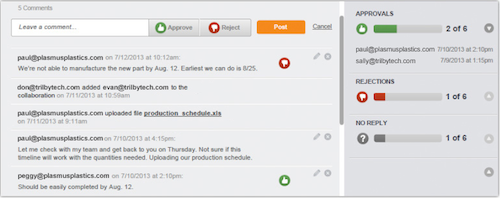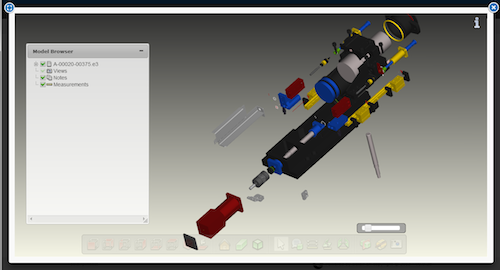Sunny Forecast for Cloud-Based PLM
Latest News
October 24, 2013
What some claim is the originator of the hosted PLM concept and the latest entrant to the category both took the wraps off new versions of cloud-based PLM, spotlighting what appears to be a discernible shift toward this model of deployment.
On-premise deployments and traditional-style PLM still comprise the lion’s share of the market and user implementations, and likely will for some time. However, interest in cloud-based PLM is definitely picking up, in part because of the overall uptick in demand for Software-as-a-Service (SaaS) business software as well as the fact that there are a growing number of SaaS-based PLM offerings to choose from today.
In addition to the splash made by Autodesk with Autodesk PLM 360 and its expanding family of cloud-based engineering tools, there have been a slew of new cloud-based engineering collaboration platforms and refinements to existing platforms, giving engineering customers a deeper selection of choices. According to research by TechNavio, the PLM market is expected to achieve a 9.7% compound annual growth rate between 2011 and 2015, and cloud-based PLM applications, in particular, are expected to drive much of this growth.
One of the companies expecting to capitalize on this anticipated growth spurt is Arena, which came out with the first cloud PLM platform (it was referred to as hosted or on-demand software back then) more than a decade ago and has been at it ever since. Arena settled on what at the time was a disruptive software delivery model because of its target audience—companies in the electronics sector, which typically rely on contract manufacturers and extended global supply chains while dealing with extremely short product delivery cycles and highly accelerated rates of change.
“The outsourced manufacturing world works well with cloud applications,” says Steve Chalgren, Arena’s head of product management and strategy. “If you have on-premise PLM, everything is behind the firewall, which requires a lot of user provisioning on enterprise applications to give suppliers access. It’s a huge IT cost for OEMs.”
Instead of spending millions of dollars of an enterprise PLM deployment, electronics OEMs can take a couple of hundred thousand dollars annually and get the same capabilities. “It may not be totally custom, but it solves their problems,” Chalgren says.
In its latest Fall 2013 release, Arena has added three new applications designed to give its customers (again, most in the outsourced manufacturing world) the tools to help transform their manufacturing operations and maximize business results.
1. Arena Demand helps OEMS calculate aggregated materials needs across all of their product lines so they can better negotiate with suppliers.
2. Arena Projects connects the project schedule directly to the product record, increasing visibility so engineering and manufacturing groups can better facilitate new product introductions and new quality processes, among other processes.
3. Arena Exchange is a flexible and secure collaboration environment designed to look and feel more like modern, social platforms like Facebook, connecting multiple users at different supplier levels throughout a global supply chain.
Upstart Solair is also upping the ante for cloud-based PLM. The Italy-based newcomer has just released Solair PLM, its SaaS-based PLM offering, to the European market with plans to actively jump into the U.S. market by the first quarter next year. Solair PLM was designed from the ground up as a true, multi-tenant, cloud-based system with a pay-as-you-go licensing model. It’s also designed from the start to be scalable and easy to implement—the firm has a patent pending on technology that automatically configures the system in the cloud so users don’t have to do any heavy lifting around coding or integration, says Tom Davis, Solair founder and CEO.
“There have been great studies on how great PLM is and how it can help increase quality, but the problem has been how to help companies access those benefits,” Davis says. “We’re trying to make the benefits of PLM accessible to everyone, even small companies in the supply chain.”
Solair PLM covers the usual PLM workflows, from full document management and revisioning to bill of materials management and integration/visualization of CAD data.
Baldi, a Florentine company that makes furniture and accessories for the luxury market, plans to move from a small traditional-style PLM program to Solair PLM in the cloud specifically because of its ease of use. “Solair PLM allows us to open up our PLM platform to all our suppliers and colleagues that aren’t into CAD or technical software,” says Leonardo Boni, the firm’s head of product and R&D. The end game, Boni says, is improved collaboration across dispersed partners, ultimately leading to shorter product development cycles.
Check out this video to get a walk through of Solair PLM.
Solair PLM from Solair on Vimeo.
Subscribe to our FREE magazine, FREE email newsletters or both!
Latest News
About the Author
Beth Stackpole is a contributing editor to Digital Engineering. Send e-mail about this article to [email protected].
Follow DE









